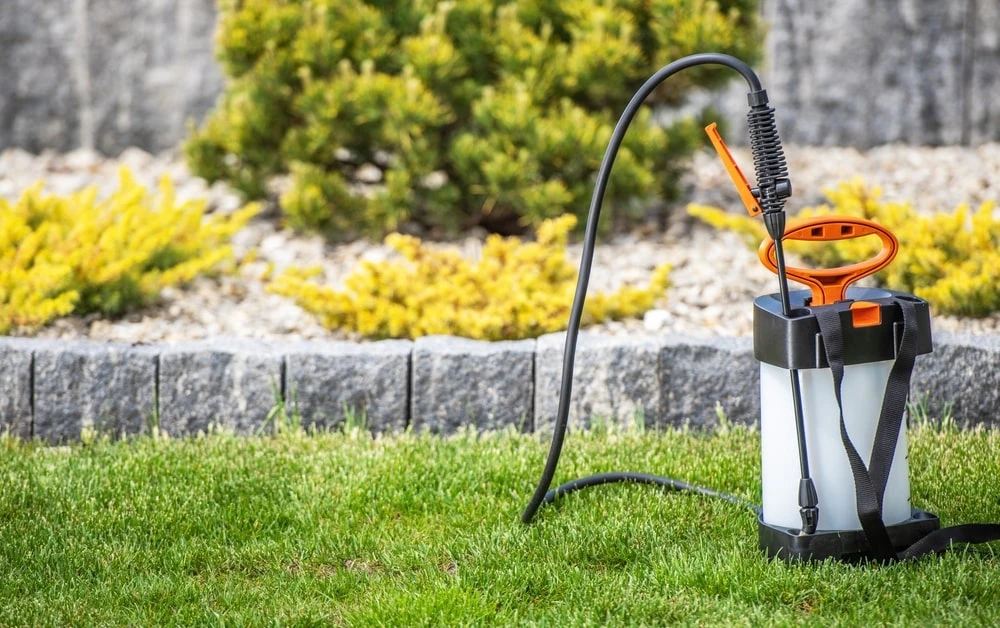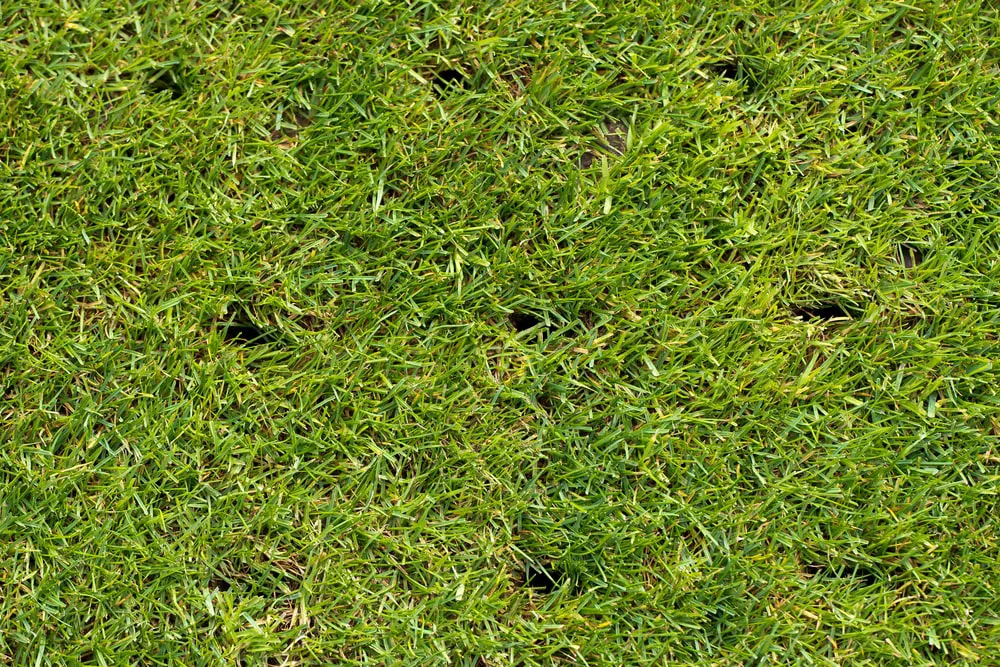How to Revive Dead Grass
.webp)
When you first buy your new home, you spend countless hours fixing the interior and exterior to your liking. After all, your home is a reflection of you. However, those renovations might leave other areas of your property unattended, like your grass. Dead grass surrounding a beautiful home isn’t a good look. It can also negatively impact your home's appeal. But you don’t have to accept a lawn that’s not up to par with the rest of your home because our lawn care experts have put together a guide that shows you how to revive dead grass. Now, your home and lawn will look their best!
Table of Contents:
What Does Dead Grass Look Like?
.webp)
While most people may think they have an idea of what dead grass looks like, there are some distinct differences between dormant grass and dead grass. Grass that is a brown color compared to a healthy green may look dead, but it could, in fact, be dormant. Some grasses will turn brown as a defense mechanism to conserve resources and ensure they survive extreme weather changes (including less water and sun). You could liken your brown lawn to animal hibernation. Once conditions improve and the grass receives the necessary nutrients, it should return to a lush, green color. However, once the grass is dead, it won't come back, no matter what you do to revive it.
So, how do you know if your grass is dormant or dead? Here are the best ways to determine if your grass is dead or just playing dead:
- The Tug Test: It's as simple as it sounds! Find a patch of brown grass in your yard. If you pull it and it comes out easily, that means your grass is dead. Dormant grass will give you some resistance since the roots are still intact.
- Identifying Patterns: Take a look at your lawn for patterns. If a large area of your grass is the same brown color, it's dormant. On the other hand, if you notice small brown patches in various parts of your lawn, it could mean those parts are dead or dying. If this is the case, take the appropriate steps to keep whatever is killing it from spreading to the rest of your lawn.
What Causes Dead Grass?
.webp)
Your lawn is a living thing, so just like every other living thing, its health and appearance are affected by various factors that could cause your grass to lose its lush green color, such as the following:
- Temperature Changes: The weather conditions in your area will significantly impact your grass's health. If you have cool-season grass, it'll lay dormant during periods when the temperature is warmer. Warm-season grass will lay dormant during extended cold fronts. But when the temperature returns to normal, the grass should eventually return to its usual healthy, green color.
- Lack of Water: Although temperature changes will affect your grass, so will other factors like the amount of water, sun, and nutrients it receives. Sticking to a consistent watering schedule will definitely help. If you have an automated sprinkler system, set it for the best time to water your lawn.
- Lack of Proper Care: Temperature, water, and sunlight all affect the health and appearance of your grass, as do factors like, weeding and fertilizing. Proper lawn care is all about maintaining a consistent schedule. Cutting your lawn to the proper height and choosing the best time to fertilize your lawn are two essential steps to keep it healthy and thriving.
Related topic: How to set zones on your sprinkler system for effective watering
How to Bring Dead Grass Back to Life
Unfortunately, once grass is dead, it can’t be revived, so let’s focus on how to get a beautiful, green lawn you can be proud of. First, check the crowns of your grass to see if they have turned brown or not. The crown is the white area at the end of a blade of grass, and it may have remained healthy and viable and not turned brown like the rest of the grass blade.
If this is the case, the grass is not dead, proper watering and care should help revive it. Unfortunately, no amount of watering will revive dead patches of grass. In this case, it’s best to seek help from a local expert near you that specializes in lawn revitalization. If you’re determined to take a DIY approach, here are a few things you can do to help your grass thrive:
Related Topic: How short should I cut my lawn?
Pulling Weeds
.webp)
If left unchecked, weeds can quickly overtake your lawn and eventually kill it. Weeds complete with your grass for water, sunlight, and other nutrients that it needs to remain healthy and strong. To keep weeds in check, remove them by hand or use a herbicide. Then, consistent watering and proper lawn care maintenance should keep weeds at bay and your grass healthy and green.
Choosing the Right Seed
.webp)
Depending on your location, you must choose the right grass seeds. As mentioned above, temperature changes can vastly affect the health and appearance of your lawn. So, you want to avoid planting cool-season grass seeds if you live in places like Arizona or Texas. Ensure you buy the correct seeds for your climate to have the best-looking lawn possible.
Related Topic: When is the best time to seed your lawn?
Fertilize the Lawn

Along with aeration, you should also fertilize your grass or hire a pro to do it. Fertilizing will strengthen your lawn and help it fight attacks from disease and insects. Spring and fall are typically the best times to fertilize a lawn. If you’re trying to revive grass that is lacking nutrients, fertilize about every four to five weeks. Then, twice a year after the first year, once in the spring and then again in the fall.
Control Pests and Diseases

Just like other living things, your grass is also susceptible to diseases and attacks from rodents and insects. Knowing how to identify and treat certain lawn diseases can save you from replacing your entire lawn. In addition, certain insects can damage and even kill your grass, so identifying and treating these pests will help keep your grass healthy.
Aerating the Soil

Aerating a lawn is often one of the most overlooked but essential parts of lawn care and maintenance. Properly aerating your soil has many benefits, but it requires specialized equipment and expertise, so if you’re not familiar with the process or equipped to do the job, contact a local aeration professional for help. Aerating involves poking holes in various parts of the soil, which makes it easier for air, water, and other nutrients to reach the deeper grass roots.
Related Topic: Dethatching, Aerating, and Seeding: Bring Your Lawn Back Next Year!
Maintain a Healthy Lawn All Year Long with The Grounds Guys®!
While it’s true that you can’t revive dead grass, you can prevent the living grass you have from dying and help it grow lush and green. A healthy lawn looks great, enhances curb appeal, and adds value to your home, but maintaining a lawn is a full-time job. If you want all the benefits a healthy, green lawn has to offer but don’t have the time, the lawn care experts at The Grounds Guys can help. Our local lawn care pros will provide you with a free estimate for any landscape or lawn care services you need. Furthermore, the Neighborly Done Right Promise™ ensures your satisfaction. Give your lawn exactly what it needs to stay healthy and green, contact us to request a quote today!
 Click to call
Click to call


